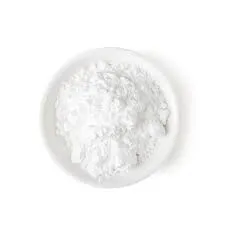Understanding Pentoxifylline A Comprehensive Overview
Pentoxifylline is a drug commonly used to improve blood flow in patients with certain medical conditions, primarily those characterized by inadequate circulation. It belongs to a class of medications known as xanthines and is often prescribed for conditions such as peripheral artery disease (PAD) and chronic venous insufficiency (CVI). The mechanism of action, therapeutic uses, potential side effects, and considerations for usage are crucial for healthcare providers and patients alike.
Mechanism of Action
Pentoxifylline works by improving the flexibility of red blood cells and enhancing their ability to navigate through narrow blood vessels. This effect is mediated through the inhibition of phosphodiesterase, leading to increased levels of cyclic adenosine monophosphate (cAMP) in blood cells. The result is a reduction in blood viscosity and an improvement in microcirculation, which can help alleviate symptoms associated with poor blood flow such as pain, cramping, and fatigue during physical activity.
Therapeutic Uses
The primary application of pentoxifylline is in the treatment of intermittent claudication, a condition where patients experience pain and cramping in the legs due to insufficient blood flow during exercise. Clinical studies have shown that pentoxifylline can enhance walking distance and improve overall quality of life for individuals with this condition. Additionally, it may be used to manage complications related to diabetes, such as diabetic foot ulcers, as it supports better oxygenation and nutrient delivery to affected tissues.
medication pentoxifylline

Pentoxifylline is sometimes prescribed off-label for various other conditions, including chronic obstructive pulmonary disease (COPD) and certain types of wounds, particularly in patients who have poor blood circulation. However, while there is some evidence supporting its off-label use, it is essential for patients to consult with their healthcare practitioners for specific indications.
Side Effects and Precautions
As with any medication, pentoxifylline is associated with a range of potential side effects. Common side effects include gastrointestinal disturbances such as nausea, stomach upset, and diarrhea. Some patients may also experience headaches, dizziness, or flushing. Serious side effects, though rare, can include severe hypotension and bleeding complications, especially in those with existing bleeding disorders or those taking anticoagulants.
Patients considering pentoxifylline should also inform their healthcare provider about their full medical history and any medications they are currently taking to avoid harmful interactions. Special care should be taken in pregnant or breastfeeding women, as the effects on fetal development and lactation are not fully understood.
Conclusion
Pentoxifylline plays a valuable role in the management of conditions related to poor blood circulation. By reducing blood viscosity and improving microcirculation, it can enhance the quality of life for many patients suffering from intermittent claudication and other related disorders. However, like any medication, it is essential for patients to weigh the benefits against potential risks and side effects. Collaborative discussions with healthcare providers remain vital to ensure optimal management of one’s health and the effective use of pentoxifylline in treatment plans. As research continues to evolve, our understanding of this medication will further clarify its role in clinical practice, potentially expanding its use in other areas of medicine.

